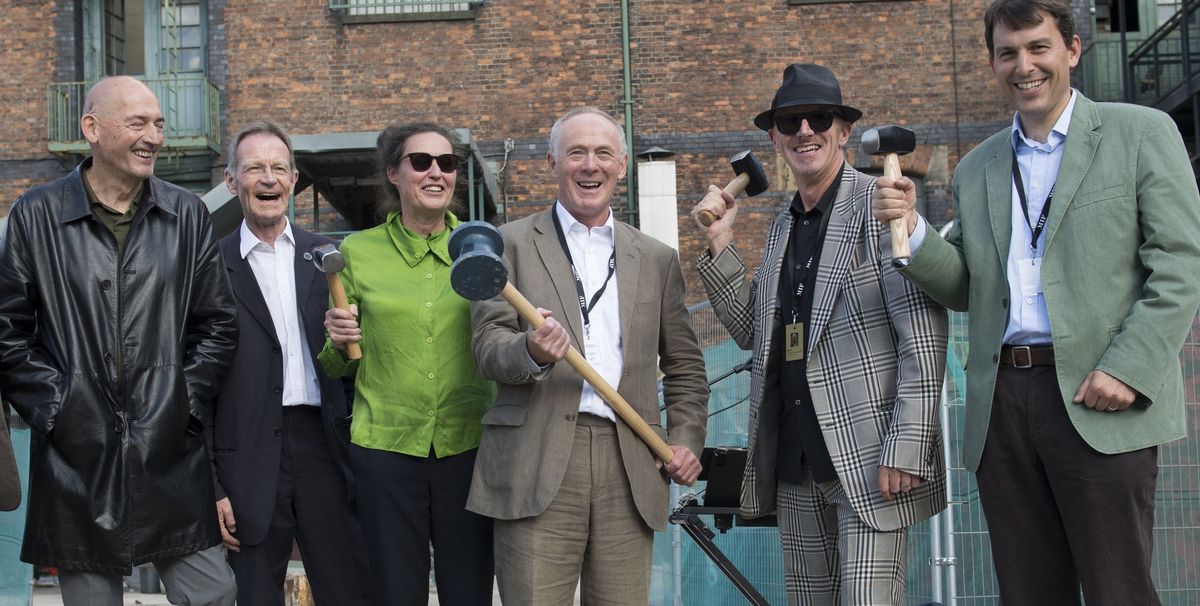The long-awaited arts hub known as The Factory, the permanent home for the biennial Manchester International Festival (MIF), moved a step closer at the weekend (8 July). A ground-breaking ceremony took place marking the start of construction and enabling works on the culture complex. The cube-shaped building, scheduled to open in 2020, will be the first major UK commission for Rem Koolhaas’s OMA architectural practice.
The centre for art, theatre, dance and music events will form part of the new St John’s neighbourhood, to be built on the site of the former Granada TV studios in the city centre. Manchester City Council will develop the scheme in partnership with the property investment company Allied London.
Funding for the £110m capital scheme comes from Arts Council England (ACE), which has contributed £7m from its Lottery fund. The government has given £78m, with £20m provided by Manchester City Council. A further £5m still needs to be raised.
Manchester International Festival has benefited especially from ACE's increased investment in the regions. “In recent ACE announcements, MIF were awarded £730,000 for the continuation of the festival and a further £9m per annum for operation of The Factory for the period 2018 to 2022,” a MIF spokeswoman says.

Ellen van Loon, a partner at OMA, says that “the venue will give MIF a fixed theatre that is extremely flexible”. Last year, Maria Balshaw, the director of Tate, told The Art Newspaper that The Factory Manchester will be a “multi-art-form centre, which can host large-scale exhibitions”. She compared the central performance space to the Turbine Hall of Tate Modern in London.
Balshaw was previously the director of the city’s Whitworth Art Gallery and Manchester City Galleries, and the “steering person” on The Factory project. She said at the ceremony that with funding arrangements in place, her role has come to an end. Other attendees included the artist Laurie Anderson, who performed at the ground-breaking, and Nicholas Serota, the chair of Arts Council England.


